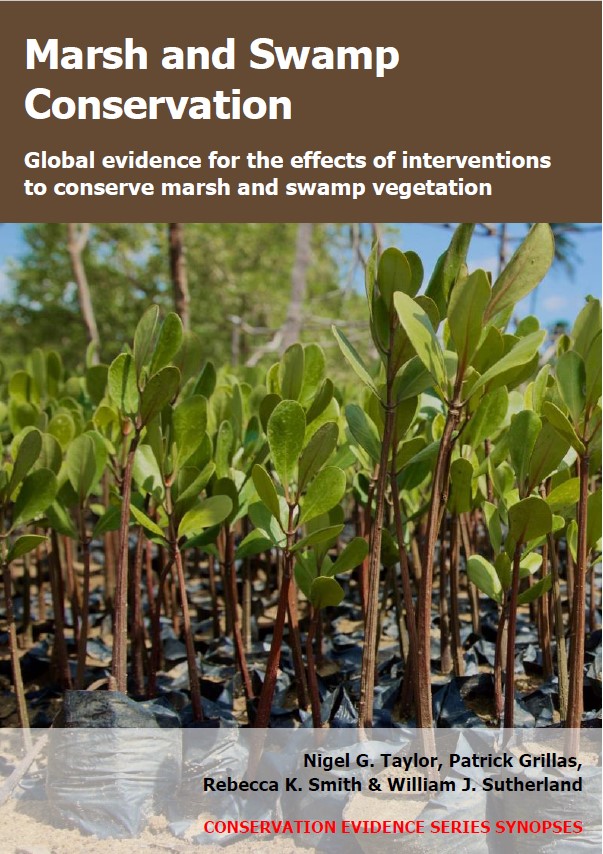Add surface mulch before/after planting non-woody plants: freshwater wetlands
-
Overall effectiveness category Unknown effectiveness (limited evidence)
-
Number of studies: 1
View assessment score
Hide assessment score
How is the evidence assessed?
-
Effectiveness
50% -
Certainty
30% -
Harms
0%
Study locations
Supporting evidence from individual studies
A replicated, randomized, paired, controlled study in 2014–2015 in two degraded floodplain swamps in Victoria, Australia (Greet et al. 2016) found that mulching plots with woodchips before planting native understory herbs increased their cover in one of the swamps, but had no significant effect in the other. Cover was monitored one year after planting. In one swamp, invaded by common reed Phragmites australis, mulched plots had higher cover of native understory herbs (26%) than unmulched plots (4%). The mulched plots also had lower reed cover (mulched: 40%; unmulched: 73%). In the other swamp, invaded by reed canarygrass Phalaris arundinacea, mulched plots had statistically similar cover of native understory herbs (3%) to unmulched plots (2%). Canarygrass cover was also similar between treatments (mulched: 96%; unmulched: 99%). Methods: In February–March 2014, four 100-m2 plots were established in each of two floodplain wetlands. All plots had been recently cut and sprayed with herbicide (to control common reed or reed canarygrass) and fenced to exclude large animals. Four plots (two random plots/swamp) were mulched with eucalypt Eucalyptus sp. woodchips. All plots were then planted with native understory herbs (3 plants/m2; species not reported), plus shrubs (1 plant/m2) and tree seedlings (1 plant/2 m2). Vegetation was surveyed in March 2015, in five 1-m2 quadrats/plot.
Study and other actions tested
Where has this evidence come from?
List of journals searched by synopsis
All the journals searched for all synopses
This Action forms part of the Action Synopsis:
Marsh and Swamp Conservation
Marsh and Swamp Conservation - Published 2021
Marsh and Swamp Synopsis





)_2023.JPG)














